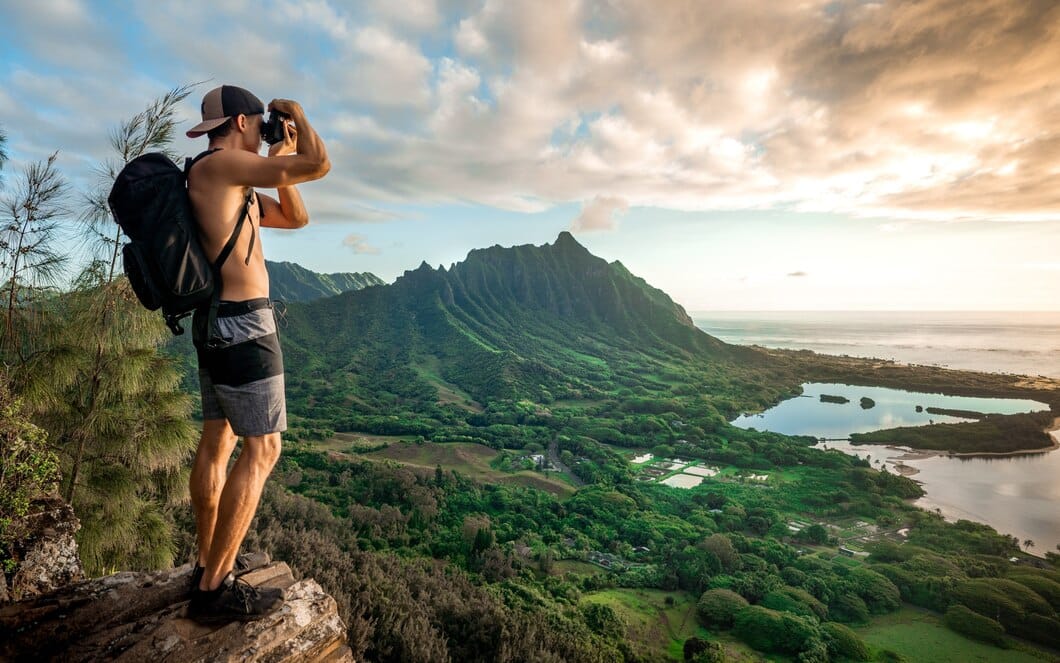Through the Lens: Mastering the Art of Travel Photography
Travel photography is more than just capturing beautiful landscapes and iconic landmarks—it's about telling compelling stories, capturing fleeting moments, and preserving memories that last a lifetime.


Travel photography is more than just capturing beautiful landscapes and iconic landmarks—it's about telling compelling stories, capturing fleeting moments, and preserving memories that last a lifetime. Whether you're an aspiring photographer or a seasoned pro, mastering the art of travel photography opens up a world of creative possibilities and allows you to share your unique perspective with the world. Join us as we explore the essential techniques, tips, and tricks for capturing stunning travel photographs that truly transport viewers to distant lands and exotic destinations.
Understanding Travel Photography
Capturing Moments, Creating Memories
At its core, travel photography is about capturing the essence of a destination—the sights, sounds, and sensations that make each place unique. It's about freezing moments in time, preserving memories, and sharing experiences with others through the power of imagery.
Telling Stories Through Images
Great travel photography goes beyond mere documentation—it tells stories, evokes emotions, and invites viewers to embark on a visual journey. Whether it's a candid street scene, a dramatic landscape, or a vibrant cultural festival, each photograph has the potential to convey a narrative and connect with audiences on a deeper level.
Essential Techniques for Travel Photography
Mastering Composition
Composition is key to creating impactful travel photographs. Experiment with different angles, perspectives, and framing techniques to create dynamic compositions that draw the viewer's eye and convey a sense of depth and dimension. Remember the rule of thirds, leading lines, and the importance of negative space in creating visually compelling images.
Playing with Light and Shadow
Lighting can make or break a photograph, especially in travel photography where natural light is often your best friend. Pay attention to the quality, direction, and intensity of light, and use it to your advantage to create mood, drama, and visual interest in your images. Embrace the golden hour—the soft, warm light that occurs shortly after sunrise and before sunset—for stunning outdoor shots with beautiful, flattering light.
Tips for Capturing Memorable Travel Photographs
Be Prepared and Flexible
Travel photography requires adaptability and flexibility, as conditions and circumstances can change in an instant. Be prepared to seize unexpected opportunities, embrace spontaneity, and think on your feet to capture unique and memorable moments as they unfold.
Connect with Your Subjects
Building rapport and connecting with your subjects is essential for capturing authentic and compelling travel portraits. Take the time to interact with locals, learn about their lives and cultures, and earn their trust before taking their photograph. A genuine connection can make all the difference in creating portraits that resonate with viewers and tell meaningful stories.
Showcasing Your Work
Curating Your Portfolio
Curating a cohesive and compelling portfolio is essential for showcasing your work and attracting potential clients, collaborators, and opportunities in the competitive world of travel photography. Select your best images that tell a cohesive story and showcase your unique style, vision, and expertise as a photographer.
Sharing Your Journey
Share your travel photography journey with the world through social media, online galleries, and photography blogs. Use captions, stories, and behind-the-scenes insights to engage your audience, build a community of fellow travel enthusiasts, and inspire others to embark on their own photographic adventures.
Conclusion
Mastering the art of travel photography is a rewarding journey of self-discovery, creativity, and exploration that allows you to capture the beauty, diversity, and wonder of the world around you. By honing your technical skills, cultivating your artistic vision, and embracing the spirit of adventure, you can create stunning images that transport viewers to far-off lands and inspire them to see the world through your lens.
Unique FAQs
- Q: What type of camera is best for travel photography?
A: The best camera for travel photography depends on your budget, preferences, and shooting style. While DSLR and mirrorless cameras offer superior image quality and versatility, compact cameras and smartphones can also capture stunning travel photographs with the right techniques and settings. - Q: How can I improve my composition skills in travel photography?
A: To improve your composition skills in travel photography, study the work of master photographers, practice framing and framing techniques, and experiment with different compositions and perspectives in your own photography. Don't be afraid to break the rules and develop your own unique style and vision. - Q: What are some common mistakes to avoid in travel photography?
A: Common mistakes to avoid in travel photography include overpacking gear, neglecting to research locations and lighting conditions, relying too heavily on post-processing, and failing to engage with local cultures and communities. Remember to focus on storytelling, authenticity, and connection in your photography to create truly memorable images. - Q: How can I make money as a travel photographer?
A: There are several ways to make money as a travel photographer, including selling prints and merchandise, licensing images to stock photo agencies, collaborating with brands and tourism boards, teaching workshops and photography tours, and monetizing your online presence through sponsored content and affiliate marketing. - Q: What are some ethical considerations in travel photography?
A: Ethical considerations in travel photography include respecting the privacy and dignity of your subjects, obtaining consent before taking photographs, avoiding exploitation and objectification, and giving back to the communities you photograph through responsible tourism practices and community-based initiatives.